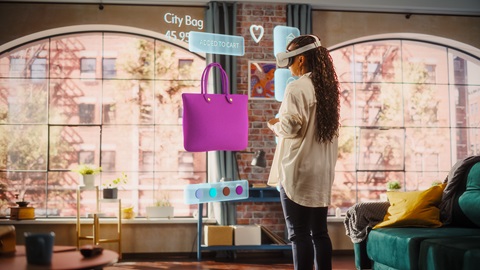Acing Consumer Behaviour: It’s Not About How Much It Costs... It’s About How Well It Fits
Does it matter if a bar of soap is described as one which “gives you softer, smoother skin” or which “gives your skin some love”? Or if a computer boasts “4 million pixels” or seduces you with “a whole new vision for the notebook”?
Does it matter if a bar of soap is described as one which “gives you softer, smoother skin” or which “gives your skin some love”? Or if a computer boasts “4 million pixels” or seduces you with “a whole new vision for the notebook”?
Our research shows that how a product is marketed vis-à-vis its relative price, matters...it can make the customer want to buy it, or not.
It has to do with the “fit” of the marketing message to its comparative price.
We marketed a $1 bar of chocolate against two other bars. When it was sold beside a $10 bar of artisanal chocolate, more consumers chose it when it was promoted with the more concrete slogan, “Rich Milk Chocolate”. When the same bar was marketed beside a $0.25 cent Tootsie Roll, more customers chose it when it was promoted with the more abstract slogan, “Decadent Dream”.
We repeated the test with a high-end product, a diamond pendant. We described the pendant in separate surveys as being the most expensive or least expensive model in the store. We obtained similar results. When the pendant was marketed as the most expensive model, participants felt the abstract slogan, “Make it unforgettable”, was a better fit; but when the product was marketed as the cheapest model, they preferred the more concrete slogan, “Flawless quality and pure colour”,
This is because for consumers, products are mentally represented at different levels of concreteness. Generally, they associate more abstract language with luxury products such as five-star hotels rather than with youth hostels. This association arises because the purchase of luxury products is exclusive, thereby creating the sense of greater psychological distance (far). By contrast, ordinary goods are within reach, thus “closer” for the average consumer; the language used to describe them uses more concrete words.
When there is a resonance between the perceived price mindset of the product with its marketing message, it puts the consumer at ease, and he is more likely to buy. If however, the advertising message conflicts with the comparative expensiveness of the product, the customer may be confused and be turned off.
These findings have implications for designing effective marketing strategies. For example, if you are trying to sell an energy bar that is more expensive than another comparable bar on the market, the marketing message needs to focus on its abstract properties rather than on its concrete features.
Another study confirms that it is not the absolute price of the product but its comparative expensiveness that determines the fit with its marketing message.
When a $1.99 energy bar was marketed next to a more expensive $2.49 bar, customers preferred it when it was described with a more concrete slogan, “A balanced source of carbs and proteins”. When the same bar was marketed next to a cheaper $1.49 bar, it was received better when it was promoted with a more abstract slogan, “For stable and long-lasting endurance”. This result shows that the perceived cheapness or expensiveness of a product can be manipulated by varying its context. We were able to make the same $1.99 bar seem expensive or affordable by varying the products it was being marketed with.
This provides practical implications for marketers. For example, they can make a product appear inexpensive by contrasting it with premium versions of that product. Imagine, for instance, a dealership where the same BMW 5 Series sedan may appear expensive when displayed next to a 3 Series vehicle but affordable when displayed next to a 6 Series model.
Finally, a more revealing study shows that consumer perception of a product, and its slogan, can be manipulated.
In this study, participants were first primed into a lower or a higher price comparison mindset. They were then presented with the target model of a moderately priced car, an Acura TSX, which was compared with five highly expensive cars (e.g. Ferrari 458 Spider) and five moderately inexpensive cars (e.g. Ford Fiesta).
Participants rated the Acura TSX as more expensive in the condition where they were primed into a lower-priced mindset; then went on to evaluate that the higher level abstract slogan as a better fit for the car; and vice-versa. This study shows that we can coax consumers into a low or high comparison price mindset in one setting; and use that to influence the subsequent “fit” of an advertisement for another product in a different setting.
Our studies offer useful insights into how the consumer mind works, and possible strategies for marketers.
Retailers should align their promotional slogans according to the comparative expensiveness of their products, no matter the absolute price.
They can affect the customer’s perception of the expensiveness of the product by changing the assortment of products against which the product is presented. Retailers can also make a product appear more or less expensive by contrasting it with the lower range or premium versions of that product line.
Another strategy is to use a pre-sale manipulation to prime the customer mindset, through in-store displays, online shopping interfaces, advertisements, to think of the product as being relatively expensive or inexpensive.
There are many permutations of how this powerful economic and psychological cue —the twin concepts of perceived price and the fit of the marketing message —can be harnessed to ring in the customers.







